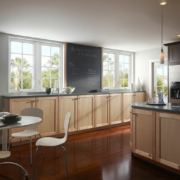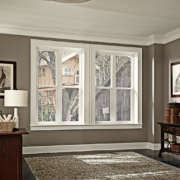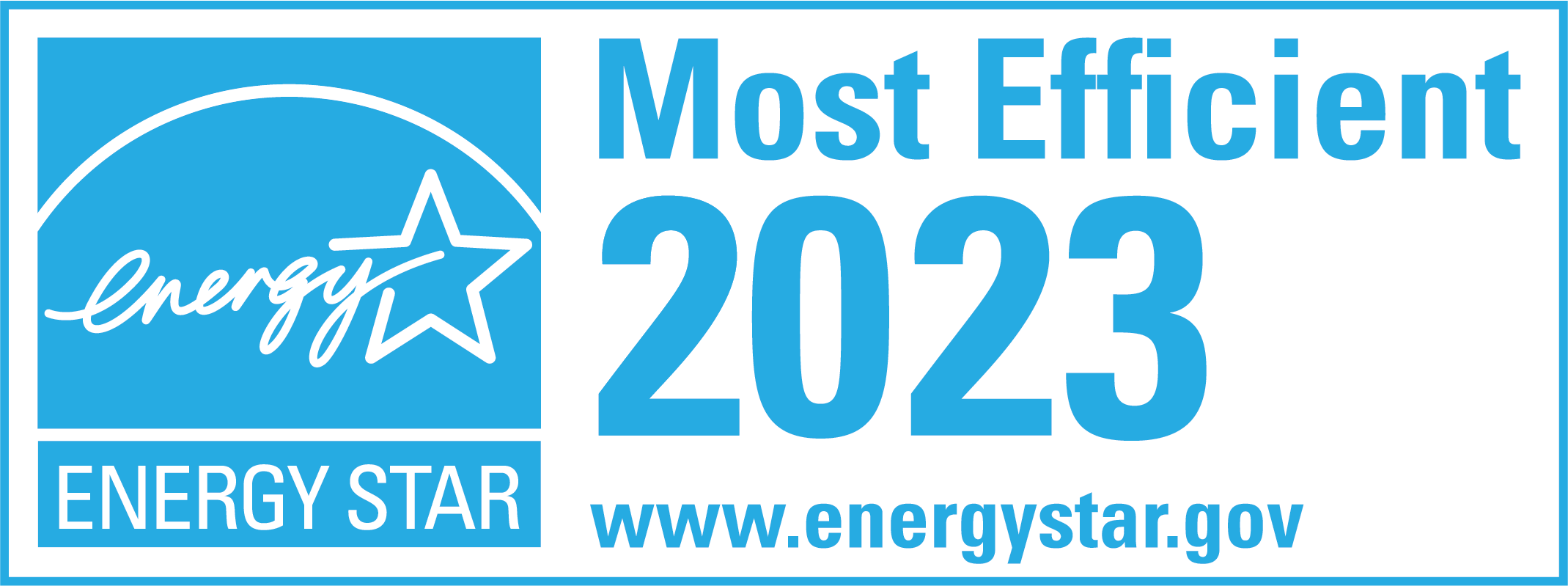How is a Vinyl Window Made?
Vinyl windows have become increasingly popular in the construction and remodeling industries. These energy-efficient and low-maintenance windows offer many advantages over their traditional counterparts. But have you ever wondered how a vinyl window is made? In this article, we will delve into the intricacies of vinyl window production, exploring the key components, manufacturing process, role of technology, environmental impact, and the future of this innovative industry.
Understanding the Basics of Vinyl Windows
Before diving into the manufacturing process, let’s gain a deeper understanding of vinyl windows. Vinyl windows are made primarily from a durable and weather-resistant polyvinyl chloride or PVC. This synthetic material has revolutionized the window industry due to its exceptional strength, thermal performance, and versatility.
What are Vinyl Windows?
Vinyl windows are window frames made from extruded PVC profiles. These frames are combined with glazing materials such as glass to form a complete window unit. They are available in various styles, including single-hung, double-hung, sliding, casement, and awning windows, making them suitable for residential and commercial applications.
Key Components of a Vinyl Window
A vinyl window has several essential components that provide functionality, durability, and energy efficiency. These components include the frame, sashes, glazing, hardware, weatherstripping, and screens. Let’s explore each of them in detail:
- The frame: The main structure of a vinyl window is typically multi-chambered to enhance insulation and rigidity. It is designed to withstand extreme weather conditions, providing long-lasting protection for your home or building.
- The sashes are moveable parts of the window that hold the glass and provide ventilation. Vinyl windows usually feature double or triple sashes, allowing for customizable airflow and easy cleaning.
- The glazing: The glass used in vinyl windows can be single, double, or triple-pane, depending on the desired level of insulation and soundproofing. The glazing enhances energy efficiency and helps reduce outside noise, creating a more peaceful and comfortable living environment.
- The hardware: This includes locks, handles, and hinges, enabling easy operation and security. The hardware components of vinyl windows are designed to be durable and reliable, ensuring smooth opening and closing motions while providing a high level of security for your home.
- The weatherstripping: These components prevent air, water, and noise infiltration, ensuring a tight seal and efficient insulation. Weatherstripping materials are carefully selected to withstand the elements and maintain their integrity over time, reducing energy loss and enhancing the window’s overall performance.
- The screens: Removable screens help keep insects out while allowing fresh air to flow into the space. These screens are designed to be easily installed and removed, making cleaning both the window and the screen convenient. They are also made from durable materials to withstand regular use and provide long-lasting protection against pests.
- The aesthetics: Besides their functional components, vinyl windows offer many aesthetic options. They come in various colors, finishes, and decorative styles, allowing you to customize the look of your windows to match your home’s architectural style and personal preferences.
- Energy efficiency: Vinyl windows are known for their excellent thermal performance, helping to reduce heating and cooling costs. Combining the multi-chambered frame, insulated glazing, and effective weatherstripping creates a barrier against heat transfer, keeping your home comfortable year-round and reducing your carbon footprint.
- The maintenance: Vinyl windows are virtually maintenance-free. Unlike traditional wood windows that require regular painting and sealing, vinyl windows only need occasional cleaning with mild soap and water to keep them looking their best. This low-maintenance feature saves you time and money in the long run.
By understanding the key components and benefits of vinyl windows, you can make an informed decision when choosing the right windows for your home or building. Whether you prioritize energy efficiency, durability, or aesthetics, vinyl windows offer a versatile and cost-effective solution that can enhance the comfort and value of your property.
The Manufacturing Process of Vinyl Windows
Now that we have a grasp of the components let’s explore the fascinating process of how vinyl windows are made.
Raw Materials Used in Vinyl Window Production
The first step in manufacturing vinyl windows is procuring high-quality raw materials. PVC resin, stabilizers, impact modifiers, pigments, and other additives are carefully selected to ensure the final product’s desired durability, color, and performance. These materials undergo rigorous testing to meet industry standards and ensure consistent quality.
Steps in the Production Process
Once the raw materials are prepared, the production process begins. Here are the key steps involved:
- Extrusion: PVC resin is fed into an extruder, which is heated and melted. The molten material is pushed through a die, forming the desired profile. This process, known as extrusion, creates the vinyl window frame.
- Assembly: The extruded profiles are cut to the required lengths and joined together using a variety of techniques such as welding, corner keys, screws, or adhesive. This assembly process creates the window frame, which can be customized to fit specific dimensions and designs.
- Glass installation: Once the frame is complete, the glazing process begins. The glass panes are carefully fitted into the frame and secured with glazing beads or gaskets. This step ensures a reliable seal and optimal thermal performance.
- Hardware installation: Next, the hardware components, such as locks, handles, and hinges, are meticulously installed. These elements play a crucial role in the functionality and security of the window.
- Weatherstripping application: Weatherstripping is applied to enhance the vinyl window’s energy efficiency. This helps create a tight seal between the sashes and the frame, reducing air leakage and energy loss.
- Quality control: Before the vinyl windows are deemed ready for the market, stringent quality control measures are implemented. This involves thorough inspection for defects, air and water infiltration testing, and ensuring compliance with industry standards.
The Role of Technology in Vinyl Window Manufacturing
Technology advancements have significantly influenced vinyl window production, improving efficiency and quality.
Modern Techniques in Vinyl Window Production
Automation and computer-aided manufacturing have revolutionized the way vinyl windows are produced. State-of-the-art machinery, such as automated extruders, robotic assembly lines, and precision cutting tools, ensure consistent quality and faster production times. These modern techniques have also enabled manufacturers to create more complex and customized window designs to meet the diverse needs of consumers.
How Technology Improves Efficiency and Quality
Technology plays a vital role in enhancing the efficiency and quality of vinyl window manufacturing. Computer-controlled processes ensure precise measurements, tighter tolerances, and seamless integration of components. Automated inspections and testing procedures identify and rectify any issues, minimizing human error and ensuring consistent product performance. Furthermore, advanced software and simulations enable manufacturers to optimize designs, improve energy efficiency, and reduce waste throughout production.
The Environmental Impact of Vinyl Window Production
With sustainability becoming increasingly important, evaluating the environmental impact of vinyl window production is crucial.
Sustainability in the Vinyl Window Industry
Vinyl windows offer several eco-friendly attributes. PVC can be recycled, and many manufacturers incorporate recycled content in their vinyl profiles. Energy-efficient vinyl windows also reduce carbon emissions by improving insulation and reducing the need for artificial heating and cooling. By choosing vinyl windows, consumers can make a sustainable choice for their homes.
Waste Management in Vinyl Window Production
Vinyl window manufacturers prioritize waste management to minimize the impact on the environment. Offcuts and scrap vinyl are often recycled or repurposed for other products, reducing landfill waste. Also, responsible manufacturers adhere to strict recycling and disposal protocols for any waste generated during production.
The Future of Vinyl Window Manufacturing
Innovations and trends are shaping the future of vinyl window manufacturing, promising advancements in performance, aesthetics, and sustainability.
Innovations in Vinyl Window Production
Research and development in the vinyl window industry continue to drive innovation. New materials and production techniques aim to enhance product lifespan, durability, and energy efficiency. Innovative designs, such as passive house windows and multi-chambered profiles, offer superior insulation and noise reduction.
Trends Shaping the Vinyl Window Industry
The vinyl window industry is witnessing several trends that are reshaping the market. Increased demand for energy efficiency has led to the development of highly insulated windows with advanced glazing technologies. Additionally, customization options like color choices and hardware finishes allow consumers to personalize their windows to suit their unique style preferences.
In conclusion, understanding how vinyl windows are made can help consumers appreciate the craftsmanship and technology that go into creating these remarkable products. From raw materials and manufacturing to environmental impact and future innovations, vinyl window production is a captivating blend of art, science, and sustainability.
Call us at 214-399-9592 to discuss window pricing and availability. Our replacement window services are limited to North Texas cities, from Irving and Dallas to Frisco and Rockwall.










